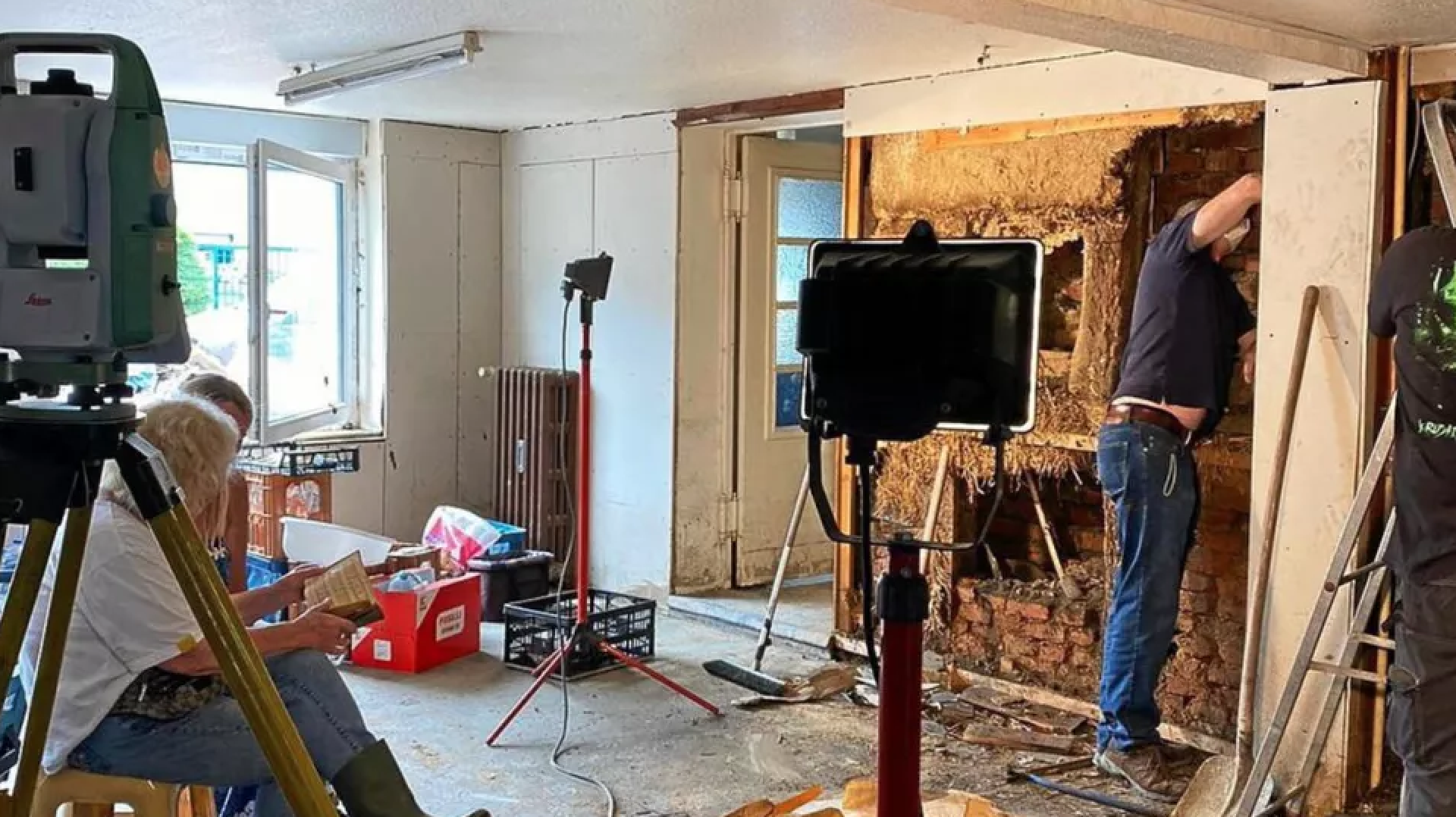
A history teacher in Germany discovered a trove of Nazi artifacts that were hidden behind a wall in his aunt’s home for more than 75 years.
He found the cache while doing repair work on the house in the city of Hagen following a flood, reports Artnews. When he removed a piece of plasterboard that had come loose during heavy rains, he found a hole filled with historic objects dating to the Nazi regime.
“I got goosebumps,” the teacher, Sebastian Yurtseven, told Westfalenpost. “I didn’t think it would turn into such a huge discovery.”
The occupants of the home, apparently hoping to avoid arrest by U.S. troops marching into the city, appear to have hastily stashed a portrait of Adolf Hitler, Nazi medals decorated with eagles and swastikas, and other objects in a narrow shaft between two houses during the waning moments of the war in Europe in April 1945.
A gas mask belonging to the local office of the Nationalsozialistische Volkswohlfahrt, or NSV, a Nazi welfare agency. Photo courtesy of the Stadtarchiv Hagen.
The secret Nazi trove also contained a revolver, brass knuckles, gas masks, and a large number of documents. Twelve boxes in total have been removed from the site to be examined by experts.
Historians have learned that the home served as the headquarters of the Nationalsozialistische Volkswohlfahrt, a Nazi-run welfare organization known as the NSV, during the war. Hitler’s portrait would have hung on the wall, while documents include detailed records of the organization’s activities.
A revolver belonging to the local office of the Nationalsozialistische Volkswohlfahrt, or NSV, a Nazi welfare agency. Photo courtesy of the Stadtarchiv Hagen.
“Finds of this kind are extremely rare and now offer the city archive the opportunity to find out more about the functioning of an NSV agency,” a government archivist told Live Science.
Historians hope the discovery will help provide a new understanding of how the NSV operated on a local level. Designed to replace church-run charities and humanitarian groups such as the Red Cross, the NSV worked to spread the Nazi ideology by offering the needy food, medical treatment, and gas masks, among other services. At its peak, the organization had 17 million members.
See more artifacts from the discovery below.
A local history teacher has discovered a secret cache of items, including this emblem, belonging to the local office of the Nationalsozialistische Volkswohlfahrt, or NSV, a Nazi welfare agency. Photo courtesy of the Stadtarchiv Hagen.
A portrait of Adolf Hitler belonging to the local office of the Nationalsozialistische Volkswohlfahrt, or NSV, a Nazi welfare agency. Photo courtesy of the Stadtarchiv Hagen.
Brass knuckles belonging to the local office of the Nationalsozialistische Volkswohlfahrt, or NSV, a Nazi welfare agency. Photo courtesy of the Stadtarchiv Hagen.
A local history teacher has discovered a secret cache of items, including this belt buckle, belonging to the local office of the Nationalsozialistische Volkswohlfahrt, or NSV, a Nazi welfare agency. Photo courtesy of the Stadtarchiv Hagen.
An SA whistle belonging to the local office of the Nationalsozialistische Volkswohlfahrt, or NSV, a Nazi welfare agency. Photo courtesy of the Stadtarchiv Hagen.